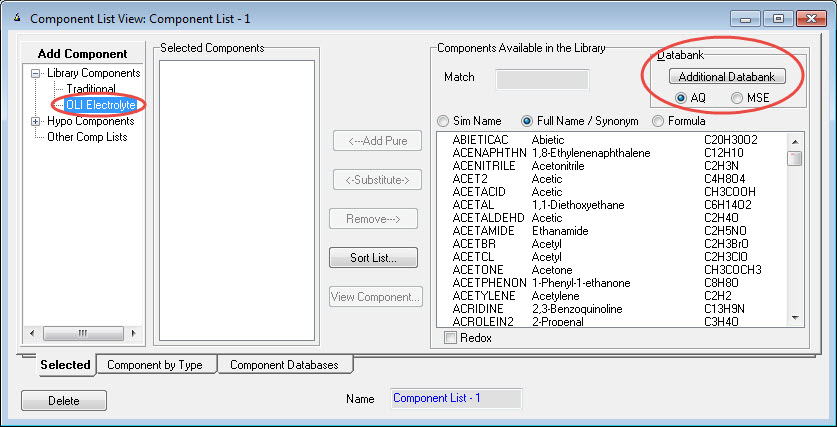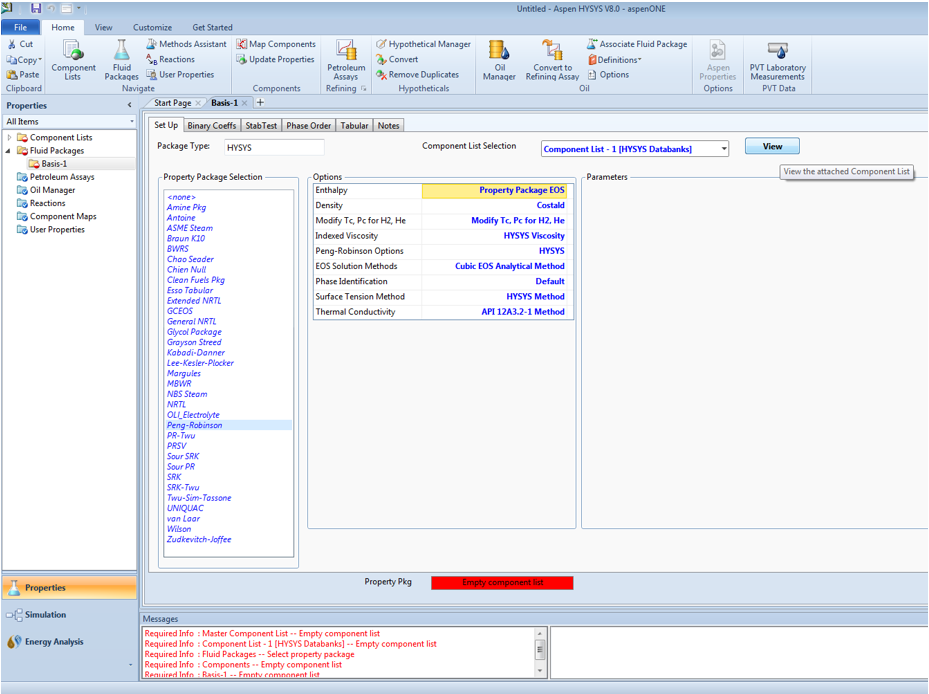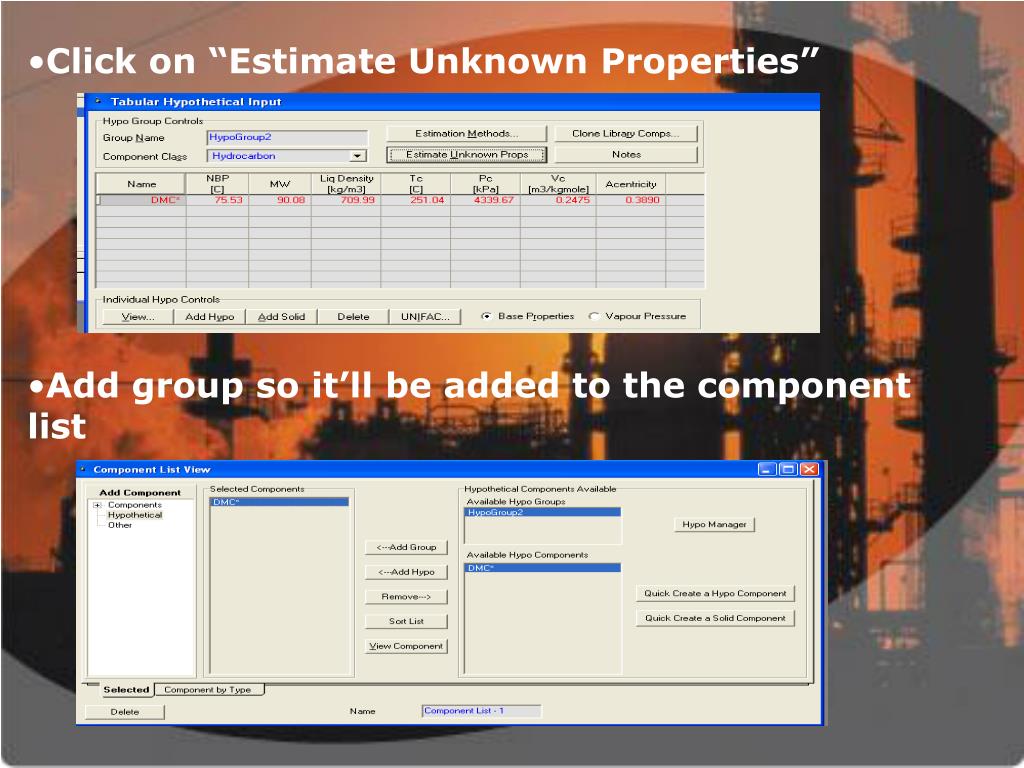

- #HOW TO ADD A HYPOTHETICAL COMPENENT IN UNISIM DESIGN PROFESSIONAL#
- #HOW TO ADD A HYPOTHETICAL COMPENENT IN UNISIM DESIGN FREE#
This data would then be plotted on a graph so it can be visually analysed in order to identify a possible causal link between the manipulations and the frequency of the behaviour. These four conditions would be alternated over a number of days and data would be continuously recorded on the frequency of head-bangs throughout. Basically, he is using the head-banging behaviour to get the teacher to stop making him complete any academic tasks.ĭuring this condition there are no head-bangs. This is called the “contingent escape” condition and if the behaviour was frequent during this condition it would suggest the function of the behaviour was to get away from having to complete academic tasks.

On the fourth day, the practitioner would stop running any academic programmes each time the boy engaged in head-banging. see The functions of self-injurious behavior: An experimental epidemiological analysis by Iwata et al (1994).ĭuring this condition there is one head-bang. This is called the "free play" condition and it is used as a control for the other conditions as it basically gives the client what he wants, places no demands on him and gives him attention even when he is not head-banging.Īs a result, it would be expected that the frequency of head bangs would be low (Cooper et al, 2007) but this is not always the case e.g.
#HOW TO ADD A HYPOTHETICAL COMPENENT IN UNISIM DESIGN FREE#
On the third day, the frequency of head banging is recorded while the child is in free play - which basically means the child plays games or with toys of their choice with the practitioner. You might wonder how head-banging could be self-pleasing but this can occur because, for example, there may be some form of internal self-stimulation that is obtained from the head-banging.ĭuring this condition there is one head-bang. The easiest way of explaining automatic reinforcement is to think of it as something that is "self-pleasing" or “self-stimulating” and does not involve another person (e.g. This would be called the "alone" condition and if the behaviour was frequent during this condition it would suggest that the behaviour is occurring because of "automatic" reinforcement. The frequency of head bangs could be recorded via CCTV or a one-way mirror.

no practitioner, teacher, parent, toys etc. The boy would be observed while on his own there would be low levels of “stimulation” available i.e. This would be called the "contingent attention" condition and if the behaviour was frequent during this condition it would suggest the function of the behaviour is to gain social attention.ĭuring this condition, head-bangs occurred nine times. Day 1: Attention Conditionįor the first day, the practitioner gives the boy attention every time he bangs his head and records the frequency of head bangs throughout the entire day. This basically means that during a given session/day, only one type of manipulation will be used, and then on the next session/day a completely different manipulation will be used.Įach type of manipulation would require its own session/day and so each manipulation will “alternate” and thus it is called an “alternating design”.Īlthough we are alternating each manipulation over successive days, a functional analysis might do this over hourly sessions, two hourly sessions, half-day sessions etc.

This analysis will use an "alternating design" which is sometimes called a "multi-element design". 219) definition: ‘audible or forceful contact of the head against a stationary object’. The Client, The Behaviour & The Designįor this hypothetical functional analysis, the client is an 8 year old boy with autism who is engaging in "head banging" (self-injury) which we will define using Iwata et al’s (1994, p. parents, staff, ethics boards etc.) would be consulted about the goals of the analysis and informed consent obtained from all parties. In addition, all relevant stakeholders (e.g. The information gathered through these initial methods would allow practitioners to develop a hypothesis about the function of the behaviour and guide the development of the functional analysis. direct observation of the client as well as interviews and questionnaires completed by parents, staff members etc. Please be aware that prior descriptive assessments would generally be made before doing a functional analysis i.e.
#HOW TO ADD A HYPOTHETICAL COMPENENT IN UNISIM DESIGN PROFESSIONAL#
It is provided to give a general outline of how an analysis might be carried out but you should never attempt to do anything like this without a professional supervising the entire assessment. This is a very basic outline of a functional analysis and is completely hypothetical – please do not emulate it. O’Neill, Horner, Albin, Sprague, Storey, and Newton (1997, p.


 0 kommentar(er)
0 kommentar(er)
